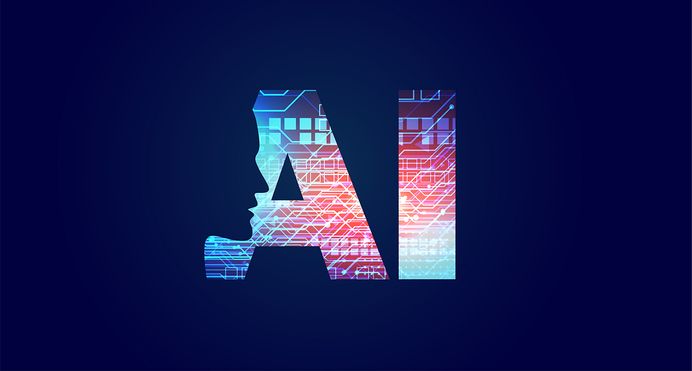Understand 5 Examples of Artificial Intelligence in Banking
The banking sector is now more inclined at leveraging artificial intelligence technologies to improve efficiencies and design exceedingly accurate systems to help manage the large volumes of data that are consumed by these institutions. It is becoming more complicated with every transaction, and these intricate systems require an assemblage of capabilities to keep the banking network from collapsing under the burden of growing activity.
Artificial intelligence plays a role in helping the banking infrastructure improve to adapt to dynamic new economic complexities. AI in banking is increasingly developing into an unalienable tool accompanying the centuries-old institutions as they reach unprecedented scales.
Here we discuss five instances where artificial intelligence in banking is bringing a new-age revolution.
1. Customer Service
Customer service is a labor-intensive domain requiring enormous training and deployment costs in order to manage the progressively disproportionate frequency of customer interactions. In order to streamline consumer experiences, AI in banking customer service has become an imprescriptible asset.
Artificial intelligence systems are highly adaptable tools that enable banks to develop tailored solutions for a wide variety of consumers without the need to engage in mass training exercises or investing in redundant practices.
Advanced solutions such as conversational AI for finance and banking sectors allow these institutions to deploy scalable interactive capabilities to improve customer retention and conversion through highly intuitive software that can partake in human-like conversations with clients.
2. Risk Management
Banks are involved with large volumes of potentialities that create an inconceivable pool of client data that is too elaborate to comprehend for hired talent. Identifying risk factors, assessing the status of such risk, and classifying such risk is a highly complicated exercise involving sums of information that require superior capabilities to be interpreted.
AI in banking and finance enables institutions to circumvent this pandemonium and generate holistic risk profiles, which can then be effortlessly translated into executable protocols for the workforce. Further, these protocols can be better equipped to make decisions on lending and investing. The application of such solutions provides banks with a better understanding and mitigation of risks.
3. Fraud Prevention
The sheer amount of information that is transferred between banks, customers, and other institutions that constitute the financial structure makes it especially grueling and likely impractical to identify fraudulent financial activity through the employment of human resources alone. The immediacy that is required to detect and prevent fraud is virtually impossible to achieve through dependence on employees alone.
AI in bank operations enables the deployment of protocols and parameters that are programmed to identify potential threats to the banking sectors and report illicit activity within a timeline that allows institutions to shelter clients and themselves from financial disasters.
4. Algorithmic Trading
Most banks and financial institutions are involved in high-volume trading activities at the securities markets and engage in what is known as High-Frequency Trading (HFT). These extremely intricate trading practices require the banks to employ highly skilled human resources to interpret and execute transactions based on the information being fed through the computers.
However, with the ever-growing volume of trades executed through the advent of liberal trading platforms and financial inclusion, the market is far more unpredictable than it was before.
AI in financial services sectors such as trading can help institutions developed practices around algorithms built to execute transactions at speeds beyond the realm of human capacity. These capabilities are unattainable for human talent, which is limited by the bounds of evolution as against machines which are only limited by innovation.
5. Business Process Automation
Banks are required to perform a number of mundane processes that require long working hours and are often met with human errors and inefficiencies. Processing data at the scale of banks is taxing on employees and is by and large a wasteful activity. Engaging humans in business processes is highly ineffective and comes at extravagant costs.
AI is capable of ensuring that uneventful processes that require careful analyses and thorough dissection of information are executed with high accuracy, allowing business to deploy their workforce to more strategic activities.
Final Thoughts
AI has penetrated the banking sector increasingly in almost all domains that have peaked their efficiency under human charge. The advent of artificial intelligence has brought unimagined capabilities into the hands of a labyrinthine industry that has remained dependent on human skill for the majority of its existence.
Artificial intelligence allows the banking sector to fill gaps in systems that were plagued by lack of productivity and exposed to threats that did not offer reasonable foresight. Through the employment of AI in the banking sector, banks are now capable of achieving better financial results, reduce costs and virtually eliminate fallacies.
At Interface, we work on advanced artificial intelligence solutions to solve some of the most challenging problems faced by the banking sector. Interface offers industry-leading AI solutions tailored to resolve the difficulties encountered by banks and financial institutions.
Visit us at interface.ai to know more about our host of offerings.
Discover the Latest Insights on Interactive Intelligence for Banking Newsletter
Join the newsletter to receive the latest updates in your inbox.



